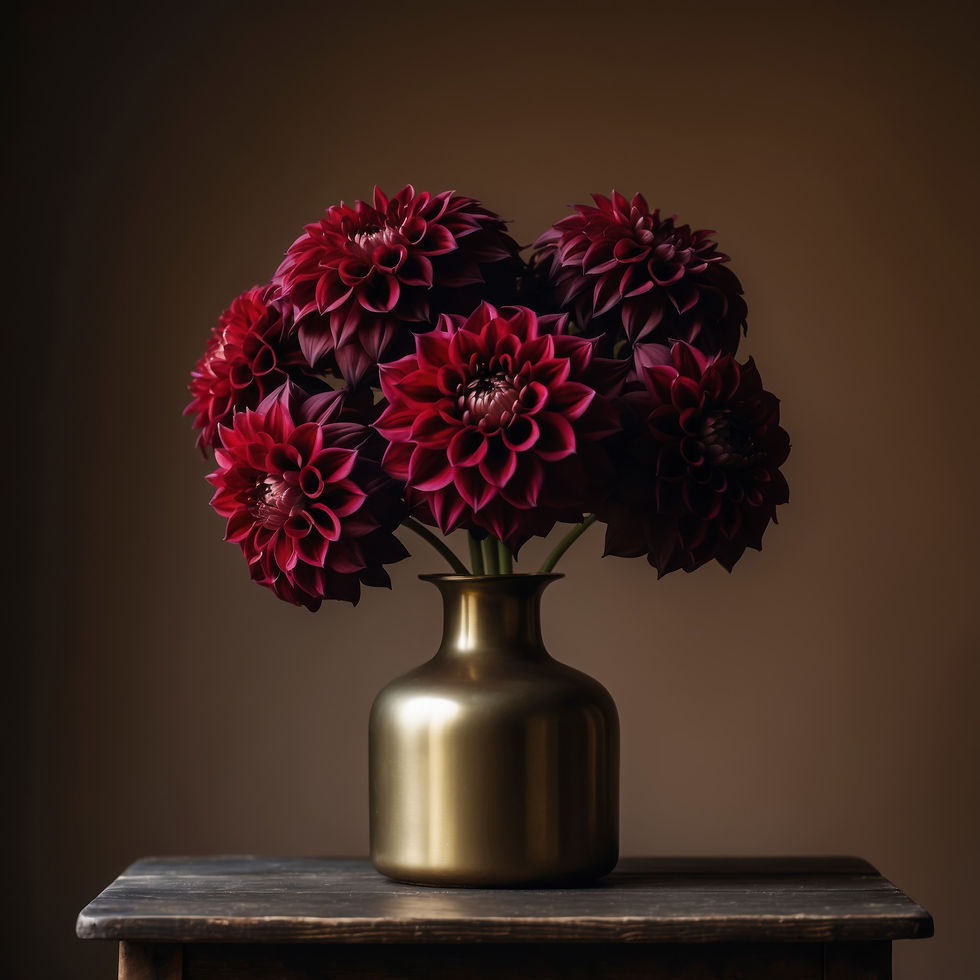How Flowers Get Their Vibrant Hues
- Andrej Apostolov
- Jul 13, 2024
- 2 min read
Flowers are one of nature's most captivating wonders, each petal a canvas painted with the most vibrant hues. But have you ever wondered how flowers get their color? The answer lies in the fascinating world of plant biology and chemistry.
The Role of Pigments
At the heart of a flower's color are pigments, which are natural substances produced by the plant. The three main types of pigments that determine flower color are chlorophyll, carotenoids, and flavonoids.
Chlorophyll, the pigment responsible for the green color in plants, plays a minor role in flower coloration. However, it’s the carotenoids and flavonoids that steal the show. Carotenoids produce yellow, orange, and red hues, while flavonoids, specifically anthocyanins, are responsible for the red, purple, blue, and even black colors seen in many flowers.
Genetics and Flower Color
The specific color of a flower is determined by the plant's genetic makeup. Genes dictate which pigments are produced and in what quantities. This genetic coding can result in a wide spectrum of colors, from the deep red of a rose to the bright yellow of a sunflower. Plant breeders can manipulate these genetic codes through selective breeding, resulting in new and unique flower colors and patterns.

Environmental Influences
While genetics lay the foundation for flower color, environmental factors can influence the final hue. Soil pH, temperature, and light exposure all play crucial roles. For instance, hydrangeas can shift from blue to pink depending on the acidity of the soil. Cooler temperatures can enhance the intensity of some colors, while prolonged sunlight can fade them.
The Role of Pollinators
Flower colors are not just for our enjoyment; they play a vital role in attracting pollinators. Different colors appeal to different pollinators. Bees, for example, are attracted to blue and violet flowers, while hummingbirds are drawn to red and orange hues. This symbiotic relationship ensures the reproduction of flowering plants and the continuation of these beautiful colors in nature.
Beyond Pigments: Structural Colors
In addition to pigments, some flowers exhibit colors through structural coloration. This phenomenon occurs when microscopic structures within the petals reflect and scatter light, creating iridescent and shimmering effects. The tropical plant "Monkey Face" orchid is a striking example of this, with its petals displaying a mesmerizing, almost holographic appearance.
The Human Touch
Over centuries, humans have played a significant role in the development of flower colors. Through cross-breeding and hybridization, gardeners and scientists have created a dazzling array of flower varieties. Modern techniques, such as genetic modification, continue to push the boundaries, giving us flowers in colors previously thought impossible.
The colors of flowers are a testament to the intricate interplay of biology, chemistry, and the environment. Each bloom is a work of art, shaped by natural processes and human ingenuity. So, the next time you admire a bouquet, take a moment to appreciate the incredible journey behind each vibrant petal.




Comments